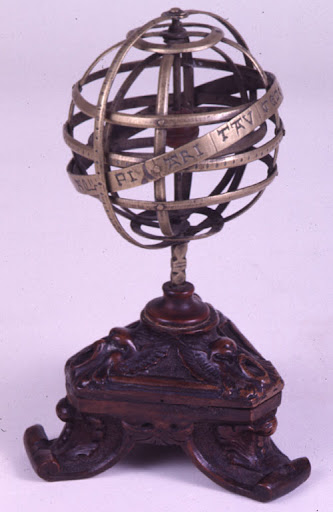Not as much is known about all the Popes of the Middle Ages as was known about Sylvester II, nor did they all lead such interesting lives as Sylvester II. Thus, this post will cover the lives of the next five Popes.

Following the death of Pope Sylvester II on the 12th May 1003, John Sicco was elected as Pope John XVII. He lasted only seven months, dying on 6th November 1003. As much there is little to write about him. He was married and had three sons before entering the priesthood (this was before clerical celibacy was mandatory, though the last man to be married as Pope was Pope Adrian II who reigned from 867-872). Nominated by John Crescentius, a noble who opposed Otto III, he succeeded Sylvester II on 16th May 1003. One of his few actions was approving a mission led by Bruno of Querfurt to Eastern Europe to evangelise the local population.

In January 1004 John XVII was succeeded by John XVIII. John XVIII power was mainly limited to ecclesiastical matters, having little temporal power. This was due to a power a struggle between the aforementioned noble John Crescentius and Henry II, Holy Roman Emperor. John XVIII father had been a priest before him and he was apparently born in Rome. His election was owed largely to Crescentii clan, to whom he was allegedly subordinate to during his pontificate. His problems were not limited to conflict between Henry II and Roman nobles, but also to conflicts between Henry II and Arduin of Ivrea. Plague also wracked the streets of Rome in this period and Saracens operating from modern day Sicily raided the local coastlines.
As Pope, John XVIII mainly focused on ecclesiastical matters. He authorised a new Diocese in Bamberg to help the missionary activity in Eastern Europe, something Henry II was much concerned with. His main ecclesiastical role focused on adjudicating on the over reaching power of the Bishops of Sens and Orleans, regarding the privileges of the abbot of Fleury. His biggest achievement however may have been temporarily creating a rapprochement between the Eastern and Western Churches. In July 1009 he abdicated, retiring to a monastery where he died shortly after.

Born in Rome at an unknown date, the next Pope was born Pietro Martino, given the nickname Buccaporci (pigs snout) due to unknown personal habits. On his election as Pope he changed his name from Pietro (Italian for Peter) to Sergius (the fourth to be Pope), in deference to the first Pope, Saint Peter of the apostles, a tradition that has been carried to the modern day. Again, John Crescentius eclipsed his temporal power, however he did much to help the poor and various monasteries, such as acting to relieve famine in Rome. Before becoming Pope he had resisted attempts by Otto III to return to Rome. A Papal Bull that was issued calling for Muslims to be driven from the Holy Land has been attributed to him, but its authenticity has long been a matter of debate. He died on 12th May 1012. Though not officially a saint he was sometimes venerated as one among Benedictines. There is some suspicion he may have been murdered, as he died within a week of his patron in the Crescenitus family.

Born as Theophylact around 980 Pope Benedict VIII ascended to the throne of Saint Peter on 18th May 1012. Unusually for a medieval Pope, Benedict had strong authority both locally and abroad, though he was not without opposition. The Antipope, Gregory VI compelled him to temporarily flee Rome. Benedict VIII restored Henry II to the throne as Holy Roman Emperor, and the two remained on good terms. During his pontificate, the Saracens renewed their attacks on Southern Italy, and Normans also began to settle Italy. Benedict allied himself with the Normans, and orchestrated the Saracen defeat in Sardinia. He also held a synod on Simony and Incontinence amongst the clergy, as well as consecrating the cathedral at Bamberg while meeting Henry II about the rising threat of Byzantine Empire to the east of Italy in 1020. In 1022 he also received the Archbishop of Canterbury, Æthelnoth of Canterbury who obtained the pallium (an ecclesiastical vestment). He encouraged the Truce of God and convinced the Holy Roman Emperor to lead an expedition in Southern Italy against nobles who had defected to Byzantium. He died in 1024.

Benedict VIII’s brother, Romanus, succeed Benedict as Pope. John XIX was a layperson, not a priest, when he was elected Pope, so had to be ordained and consecrated as a Bishop upon his election. Despite dying in 1032, he played a role in the Schism on 1054 by rejecting a proposal of the Patriarch of Constantinople to recognise the Patriarchs sphere of interest in the east. He was later allegedly paid a large bribe, and then recognised the Patriarchs claim to the title of ecumenical bishop. However the indignation throughout the church was such he was immediately forced to pull out of the deal. On the death of the Holy Roman Emperor Henry II he gave support to Conrad II. King Rudolph III of Burgundy and Cnut the Great of Denmark and England both took part in a pilgrimage to Rome to see John XIX. In 1025 John would go onto send a crown to Poland and bless the coronation of the Polish King Boleslaw the Brave. In 1027 John XIX would go on to give the Patriarch of Aquileia great power and gave him precedence over all the Italian bishops, before revoking his decision in 1029. In 1032 he would die, allegedly killed by a mob of peasants angry at his conflict against Odilo of Cluny. However there is no direct evidence to support the fact he was killed by peasants.
I hope you have enjoyed this post of five Popes and return to see the next post.



